





11AM - 4PM UNE 28 J saturday












































11AM - 4PM UNE 28 J saturday





































June 6 to July 6, 2025

Opening Reception: Friday, June 6, 5-8











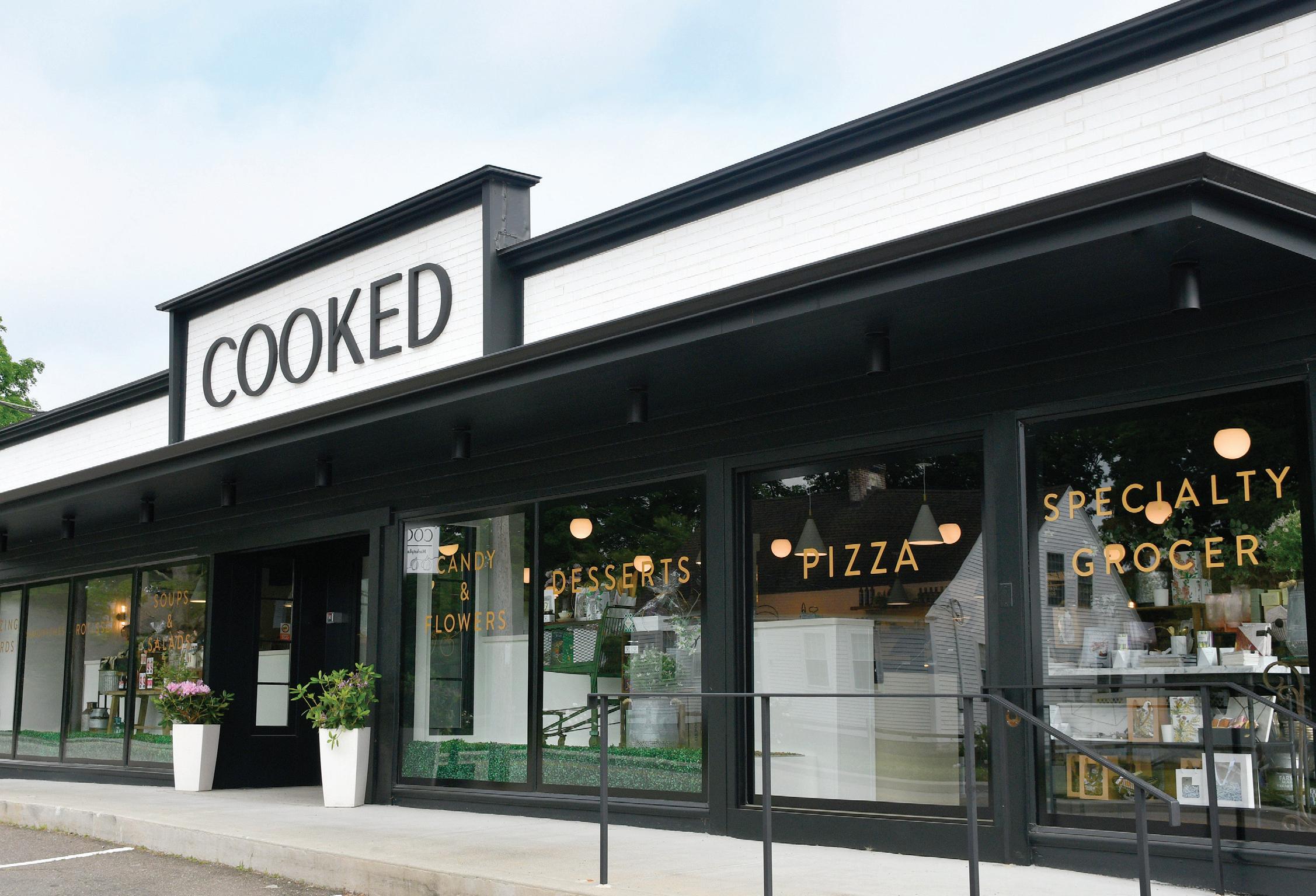










Y obsmacked.
Yoou’ve likely heard the word before, but perhaps you’re not familiar with the origin or true meaning.




shocked, usually in a very astonished and surprising way
“Gob” is used in the UK and Northern Ireland. It’s slang for “mouth.” Smacked is, well, “smacked.” So, if you’re gobsmacked, you’re y. Following is a story that should have you gobsmacked. And hungry too.
T
Kathy Stephenson owns eight of those legs.
Twwowomenmetbecauseofanurgencyinvolving12legs.
Teeresa Findlay is responsible for the other four.
T gency involving 12 legs.
that’s how Kathy and T T
Toogether they make for good neighbors, fast friends, and wildly successful business owners who both own Labrador Retrievers. Equation: three dogs=twelve legs. And like every dog, morning means going for that requisite walk, regardless of weather. So Teeresa met, how they got to know each other through many conversations that revealed their backgrounds and talents, and how eventually they became business partners, creating a “shrine” to delicious food. A glorious takeaway of both locally and internationally sourced food thatbecame a must-stop in Centerbrook, CT for people who love to eat and eat well.
This is C O O K E D, Marketplace & Mercantile, andthecenterpieceofCenterbrookforgood time. T enjoys, and how to deliver it. Every day , what to buy how to buy and the centerpiece of Centerbrook for good taste, good people, and absolutely delicious food. Everything about C O O K E D says “Class,” but never stuffy nor untouchable. It’s what people want to eat, want to serve, want to have catered, and want to give to others because at its most basic, food is more than nourishment, food is L O V E.
Make no mistake. This is in no way two suburban women coming up with an idea for a “fun business” and running with it. C O O K E D is based on years of culinary experience and merchandising, on expert planning, and on knowing precisely y, y, , what the community y. . Every Teeresa and Kathy never rushed but took more than a year to develop their concept, find a location, and fine-tune the recipes they wanted to showcasetotheircommunityof “foodies ” showcase to their community of foodies.







Ka the wh to Di years at River T avern in Chester River T
athy Stephenson is not only one of e two Co-Founders, she is the Chef ho went from her home kitchen volunteering at the first night of nners at the Farm some 19 years ago. he followed that up with interning Ta r, , was soon red, learned her craft under the telage of the best, and spent the next Taavern managing nners at the Farm as well as earng her chops in the catering end of e business. So as you can see, this as no whim. Kathy is fully com-
Din Sh at hir tut 17 Din ing the wa mi ma wi yea fla He Fin Ca ancouver , a native of V ndlay yy i tted to using local ingredients and aintaining the strong relationships ith local farmers she has forged for ars. They are the inspiration for the vors she creates.
e r partner, Co-Founder Teresa y, Va r, , a nada, just plain loves food and cookdhkk es wo foo igi fro Cu tio ben shi for to ici onally Y
oking and has taken cooking coursand eaten her way throughout the orld. She has learned not only about od and beverage but about their orins and the cultures they represent om the chateaus of France to the ulinary Institute in New Yoork. Addiy, , Findlay has a decided artistic nt as a clothing and high-end tee irt designer. She has a trained eye r color and display and used this create a stunning monochromatinterior and exterior at C O O K E
joy
D. The predominant black and throughout is not so much a th back to an Art Deco style as it sophisticated, and simply “pops simplicity of those black block spellingoutC O O K E D grabs attention right from theroadan you in to see what this is all ab C O O K E D is all about appre y, , and taste. Good taste in th good taste in the foods, good t the choice of staff and how the plementandworksuccessfully he décor
plement and work successfully with customers. Then ther Teeresa herself who has tasted it all.
T e’s T
d white hrowis smart, s.” Just the k letters s your ndinvites bout. And eciation, r, , taste in ey comywith

Teeresa readily admits, “I try every product and every oil before we put it on our shelves, and I especially have to know the people behind those products. Both the people and their products have to resonate with me, or they’re not sold here.” Yoouwon’tfindthefamiliarnationalbrands at C O O K E D, but you will find the best foods from all around the globe complemented by an inventory of house made sauces, condiments, and those chef-driven recipes that took nearly a year to develop. Yo Teeresa says with a grin, “Not Bud Lite.”
T ou’ll also find beer and wine, but as T Y Y
ferssomuchtoitscustomers.OfbecauseCOOKEDof
Trrying every product? That’s both an eyeful and a mouthful ff ffferings are writtenacrossthefrontofthebuildingbutifyouhaven’tbeenby Y
GROCER; however & FLOWERS – DESSER written across the front of the building, but if you havent bee take a look: GRAZING BOARDS – SANDWICHES – ROTISS – SOUPS & SALADS – CANDY RTTS –PIZZA – SPECIALTY r, , there isn’t enough s to spell it all out, and besides, you want to come in. Yoouhave come in. So, come on in! en byy, , ERIE space e to







e’s a case filled with T
muf chetta daily por
It is impossible to excite taste buds wit real thing’s right inside the door; to say up the local Friday night spot where yo when ther Teeresa’s pizza only steps away; to tempt with m rc y, , fresh fish direct from Britis ed cod using the recipe from Nobu in ffifins, cookies, quiche, and fresh bread Haven famous for old world recipes with h r th word salad when the y “pizza” when it conjures ou’ve ordered for years s own chef-driven specialty mere words of “soup bar, , ” hoot sh Columbia, miso-marinatn New York, and scones, d daily from Whole G in New h new world flavors.









food, delicious pastries, cof
So, stop, inhale. T away dayy. . Promptly at 11 AM, the breakfast varieties are w y, , and a mouthwatering selection of fresh hot fo foods, sandwiches, wraps, just-made soups, and inv ads are ready for you to swoon and spoon.
Taake a little of this, have them wrap a b grab some imported chocolate, purchase a bouquet of fl overnight from Holland, a delicious loaf of bread for r, , a little gift for that someone at work having
dinner
Then exhale. Get in your car. Or truck. Or rideshare again, then reach over into the bag for just a little pi bite. Nothing more for right now. Betcha can’t do it! y. . This isn’t any m Teemp in one place.
isn’t any takeaway

The doors open 7 days a week at 8:30, and there’s bre fffee, fresh juices, smoothie for you, and always something new and exciting to s a birthday eakfast! Hot es made just start your whisked oods, comfort ventive salbit of that, flowers flown tonight’s y. . Inhale once iece, just a ! For this meal or snack pt to taste all macked. eet a neighbor Centerbrook, first thing arketplace. or nosh. This is C O O K E D. T
No question you’re gonna be gobsm
See whi C O just you com what can happen when you me ile walking your dog?
O K E D is at 5 Main Street in C off Rt. 9 North, and about the fi u’ll see in town. www.cookedma m (860) 662-4917


an established full-service law firm for individuals and their growing business since 1977
Whether it is buying or selling your home or business, dealing with your estate plan or probating an estate, coping with family law issues, prosecuting or defending litigation including personal injury, medical malpractice, and criminal defense, BPS Lawyers has been on your side for more than 48 years. Reliable, innovative and committed to excellence. at BPS Lawyers, you get more than a lawyer, you get a full-service law firm.






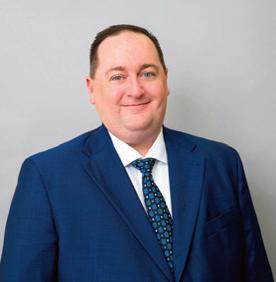








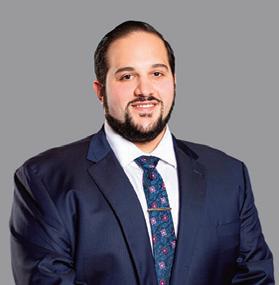



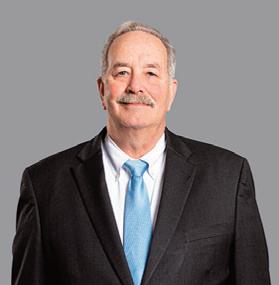


























































by Elizabeth S. Mitchell
Restaurants with kitchens still open,” I typed into my search bar as I sat, dressed like a Christmas-themed cat, in my car in the parking lot of The Essex Steam Train. I had just finished a night of rehearsal for the first job I ever had on the shoreline: a performer on the train’s famous holiday show, The North Pole Express. I was living alone in an offseason rental, having only moved to the area a couple of months before, and I knew all I had in the cupboard at home was cereal.
“The Monkey Farm,” my phone suggested in answer to my question about kitchens open at 10:00 at night. So I typed it into Google Maps, and off I went.
Upon walking into the barroom for the first time, I encountered a lively crowd of people talking and laughing with each other. Realizing I was a stranger in what appeared to be a group of regulars, I tried to keep my head down and not be noticed while I took a seat at the corner of the bar. My attempt at disappearing in plain sight would likely have been more successful had I remembered to remove the rhinestone cat-ear headband from my head.
After ordering a sandwich and a glass of wine from the kind bartender named Dave, I looked around and accidentally made eye contact with a very handsome man at the opposite corner of the bar, who smiled at me. I smiled back.
I was about to meet my future husband. We are set to be married this August.
Perhaps there isn’t something so remarkable about meeting the love of your life in a bar; it’s called “meeting the old-fashioned way” for a reason. But there is something remarkable about the bars of the shoreline and the communities that meet within them. I didn’t just find my future-husband in them; I found friends; I found Ink Magazine; I found my career at Sip Wine Bar. From connections I made by simply talking with people on both sides of shoreline bars, I slowly went from a new-to-town stranger to a member of the community myself.
When I first moved to Old Saybrook and was trying to figure everything out, bartenders like Erica at Fresh Salt became a kind, warm still point in what felt like a world and a life in major flux. She knew my name, and I knew hers. She was genuinely happy to see me, and I was genuinely happy to see her. These are not small things when you are new to a place.
And now that I have been behind the bar myself at Sip for four years, I take deep and genuine pride in providing that still point for others. People come to celebrate; people come to cry; people come at the biggest moments of their lives and in small, quiet moments to be around others.
When my closest friends came to town a couple of weeks ago to celebrate my impending nuptials and my graduation from my MFA program, they asked what I wanted to do to celebrate. I chose to make a few stops at my favorite local bars - not for the purpose of a bar crawl, but for the purpose of celebrating with my community.
The connections made in these shoreline bars, all of which are unique in their own way, are real, whether they are brief and momentary or whether they build into lifelong connections.
A woman who became a beloved regular of mine, who would come and talk to me as she went through major life changes of her own, eventually became like a member of my own family and is doing me the honor of officiating my upcoming wedding ceremony. A 99-year-old World War II veteran I met at Fresh Salt has become a dear and beloved friend to me (and a heck of a bar trivia teammate). A woman who happened to be at The Monkey Farm the night I met my fiancé and who takes credit for encouraging him to come talk to me, has become an invaluable business contact.
The bars of the shoreline are remarkable because the people within them are remarkable, because the communities in which they operate are remarkable, and I am deeply proud to be part of a community “where everybody knows your name.”




































































“So leave your troubles outside, and come on in for a few hours and enjoy!”

t all began in Greece around 600 B.C. Steve and Jeanne Sigel weren’t there.
But the theater was, the open-air Theater of Dionysus built into a hillside in Athens and dedicated to Dionysus, god of wine and theater. The early plays were largely associated with religious festivals, yet they marked the origins of theater as we know it.

The Romans later gilded the lily, expanding upon the concept and eventually building indoor theaters that were far more elaborate and even had tiered seats much like many of today’s venues. But the Sigels still weren’t around when the Romans became involved.
Then along came 1985 some 1584 years later, and the Garde Theatre was created also on a hill though not built into a hillside. To provide some background, what follows is a brief history lesson to give you the full story, and it’s a compelling one: The Garde Theatre was originally built by Arthur Friend, a movie studio attorney in 1926 BTS (before the Sigels) as a motion picture and vaudeville palace replete with a Moroccan-style interior featuring ornate wall murals. It was named after Walter Garde, a Hartford and New London business figure and considered one of the finest movie palaces in the region. The 1920s heralded the Golden Age of film, and from the first, the theater flourished. But just three short years later in 1929, the stock market crashed, and the country was plunged into depression. This was no time to make nor watch movies, there was no money to produce or view vaudeville shows; it was a time when most Americans were looking realistically for bread lines rather than for entertainment. But the Garde never closed its doors.


In September of 1929, the theater and the accompanying four-story Garde office building were purchased by Warner Brothers for $1. along with 17 other movie palaces as part of an initiative to introduce their new “talking pictures technology.” In 1977, now under the ownership of RKO-Stanley-Warner, the Garde was sold to a local business that knew nothing of how to run an entertainment complex. The specter of the wrecking ball loomed large into the ‘80s; however in 1985, the local business sold the property to a small “save the theater” group formed as Garde Arts Center, Inc. in an effort to rescue the theater and


managed to secure a $150,000 grant matching it with grants from six or seven local banks. The doors never closed, and two years later, the Eastern CT Symphony Orchestra made its home at the Garde putting it squarely on the map.
1988 was a banner year on many levels. That year, the State of Connecticut awarded three-quarters of a million dollars to replace the heating and air-conditioning system at the theater, the first of several major facility grants. That same year after a nationwide search for an executive director, Enter: Steve Sigel! Sigel, who had a vast background working with theaters and performance arts wasted no time lining up music, dance, and all avenues of live arts along with family events that would reach deeply into the community. As a young man he had cut his teeth as a protester during the era of red-lining and knew well how to peacefully organize, take the lead, and efficiently collaborate with existing organizations.
Just one year prior, a local businesswoman with extensive marketing experience had been recruited to volunteer her design and graphics skills for the group organized to save the theater. She began as a volunteer then continued on to become a sponsor, board member, and eventually a Garde employee, remaining so for the past 22 years. Enter: Jeanne Sigel, Director of Marketing and Development

and grant writer extraordinaire! Now the Sigels were there, and things were beginning to happen.
This is hardly the end of the story, more like a beginning because Steve and Jeanne did much more than manage a theater. The Garde Arts Center is a major complex nearly one square block in size and comprises the Garde Office Building, the Oasis Room which houses a 120-seat performance space, the Mercer Building where the offices are located, and the Meridian Building, a service facility. This past April, the State Bond Commission approved a $4. million dollar grant giving Mercer Community Hall the means to support renovations and expansion in partnership with the Garde Arts Center. “This will create an affordable event space further boosting community engagement and accessibility through the arts,” said Governor Ned Lamont.
“The city and state have granted us millions,” Jeanne said. “They have been so generous. We were just given a lane behind the theater where two tractor-trailers can park side by side when traveling productions with large scenery come into town.” The Garde Arts Center represents

an Arts District not just for downtown New London, but for the shoreline, the river towns, and patrons from Connecticut to Rhode Island and Massachusetts. “I can show you our zip code chart!” Jeanne Sigel says excitedly. “They come from all over.”
The website lists upcoming events to which more are always being added as new shows become available. Best of all, in the nearly 40 years that the Sigels have been running the show, so to speak, they have established The Garde as an integral part of the neighborhood...a major player in the growth and success of New London having given a significant bump in business to area restaurants, galleries, and shops.
During the pandemic when they were forced to cancel shows, the Sigels still did not close those doors! They instead opened them to two rotating area middle school programs setting aside space for students who did not have an internet connection at home. This allowed kids to come in and do their homework in the Garde’s space which included not only supplying internet service but making sure they had breakfast and lunch daily.
“We are a community catalyst,” adds Steve who also highlights the fact that they work with other theaters statewide from the O’Neill to the Goodspeed and any other venue that wishes to partner and collaborate with them.
Education has always been paramount to The Garde, and as this issue of Ink was going to press more than 1000 local school students had just spent the morning enjoying a performance of the Eastern Connecticut Symphony Orchestra under the direction of Conductor, Toshiyuki Shimada. “Toshi was wonderful,” enthused Jeanne. “They would play a bit, then stop, and he would instruct and explain certain things to the kids about what they had just heard or why something was played a certain way. He really kept their attention.”


Yes, much has happened since the ancient Greeks and Romans invited people to those rustic outdoor amphitheaters; yet in many ways, very little has changed. In 600 B.C. theater was dedicated to the god Dionysus and presented for the entertainment, pleasure, and joy of the communities. Now, 2584 years later, the Garde Arts Center stands proud in downtown New London, its buildings occupying most of a square block. With first-rate architecture and renovated exquisite interiors it would seem a far cry from those primitive theaters cobbled into ancient hillsides. But the one thing that has not changed is theater’s purpose. The Garde Arts Center


brings the finest in entertainment to the region in a venue that is fully dedicated to the many communities it serves: delivering the arts, providing a place of education, and always cognizant of the diverse population which compromises these communities. It offers theater, music, visual arts, dance, comedy, lectures, and people from every walk of life and demographic, all the while creating its own community, one filled with joy, laughter, and promise.
And this time, Steve and Jeanne Sigel are indeed here every day opening the doors, making it happen. Keeping the Garde alive. Keeping the communities that surround it thriving. Keeping the school buses coming, audiences applauding, and new eyes and ears being opened wide to the arts.
“So leave your troubles outside,” says Jeanne. “Come on in for a few hours and enjoy!”
The Greeks and Romans would surely approve.
There’s always an art show in The Garde Theatre lobby, and right now through July 31,st it’s Art for a Change, a fundraiser to provide FREE art classes for area kids. The lobby exhibit is available for viewing Tuesday-Friday 10AM-5PM and two hours prior to performances and screenings. FUNDRAISER & RECEPTION: Friday, June 13th 5-8PM
325 State Street, downtown New London (860) 444-7373 www.gardearts
































































































































































































































































































fish with legs.
A boat on wheels.
A chicken on top of an eggbeater. Anything is possible in Sculptor Richard Abarno’s mind.
Describing his ideas as “nibbling” at his brain, he pointed to his pile of sketchbooks at his Charlestown, Rhode Island studio, saying he doesn’t know where they come from. “I just sit here doodling.”
Feeling the need to do something different 15 years ago after a 40-year career as a freelance photographer, Abarno began creating small, whimsical sculptures out of clay, paper, wood, metal, Styrofoam and wire – without any knowledge of how to do it.
After creating his first four sculptures, Abarno submitted two to the Society of Illustrators of New York’s annual awards competition “just for fun to see what would happen.” One almost all-white piece with touches of color titled “Livia” was chosen out of about 5,000 entries. Since then, his sculptures have won numerous awards from both New York and Los Angeles Societies of Illustrators, as well as from 3x3, The Magazine of Contemporary Illustration. Abarno’s pieces, which now total about 200, continue to evolve over time. “I try different materials. I’m still working on ideas.”
With every new sculpture, he doesn’t think of it as challenges to face, but rather “something that’s fun to solve,” a project he creates as he goes along, said Abarno, 86.
As an example, his current piece involves a lady who is going to be riding in her rabbit car. “What colors should she have? I love to put colors in these things because sculptures generally don’t have colors. So, then it’ll start maybe with something like a little hat. And then that’ll start to bring something else out.”


Along the way, Abarno said he might just throw the hat out and do something else. He agreed his goal is to bring joy to people, to make them smile or laugh. Even though he hopes his work will make people think and ask questions, Abarno said he has no plans to address social or political issues. “There are so many people doing that, you know, putting angst in art. That’s not me.”
Each sculpture is labor intensive. Working on it five to six hours daily (taking breaks for a bike ride, hike or appointments), this fit, youthful artist said something small like an ornament will take three weeks to complete. Something bigger takes four weeks.


Abarno’s sculpting process always begins by referring to one of his sketches or doodles. Materials for each piece vary. The “person” in the rabbit car he was working on began with Styrofoam. “And then it will get a head with a wire. You get some arms made of wire or wood.”
It’s then covered in clay or paper (to create a jacket, skirt or pants).
The rabbit-car sculpture is created completely of wood and then covered with clay, which Abarno said enables him to shave it more to make it smooth and then add much more detail. This is followed by painting the piece and adding a hat,
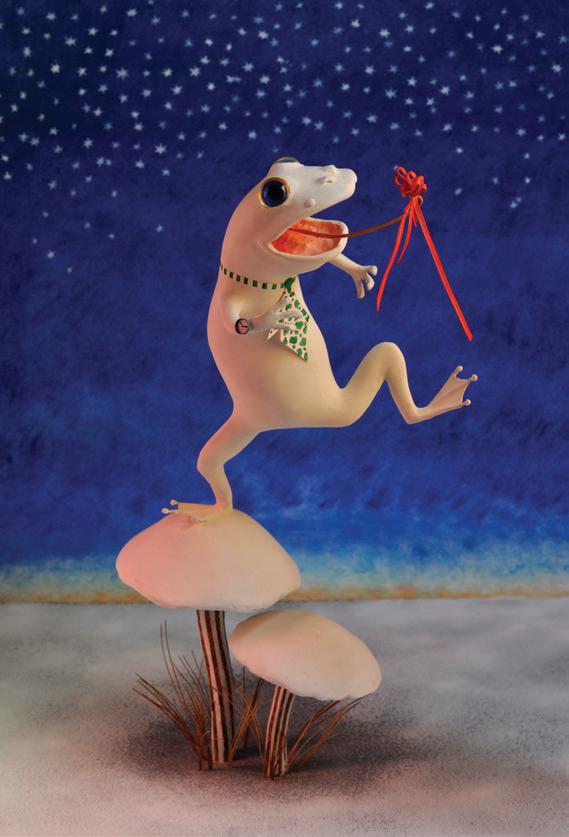

feathers or other accessories to the driver, “which is fun too,” he said, as it “gives them a different dimension.”
Asked if he has any favorite pieces, Abarno said he has some he likes more than others, but all are for sale since he can always make another one and it’s okay that they’re not identical.
Prices for his tabletop sculptures range from $100 to $1,500. Abarno also accepts commissioned work.
Some of his most popular pieces are painted artvarks (little novel creatures) with a “witchy” appearance – all doing artwork.
Abarno was born and raised along with a brother and sister in Queens, New York by a homemaker mother and a father who owned and operated a toy store. While it sounds like fun, he said it wasn’t like they could just have any toy they wanted.
From the age of six, Abarno was drawing and making Christmas ornaments, toy cars and guns.
After graduating high school and taking a nine-month course, he became a draftsman for two years – first in Queens and later for the U.S. Government in Long Island. “It was so boring.”
That came to an end when he was drafted at 19 by the U.S. Army. After a two-year stint and honorable discharge, Abarno attended and graduated from Parson’s School of Design. For four years, he worked as a graphic designer – which included one year at the Metropolitan Museum of Art. After taking some courses and learning from photographers in his building, he then segued into a freelance career as an advertising/corporate photographer.
From 1978 to 1980, Abarno had a studio on Madison Avenue in New York City. Afterward, he concentrated on getting
photography jobs in Providence, Rhode Island, Boston, Massachusetts and throughout New England. In 1990, he and his family moved out west to Durango, Colorado where he continued working as a photographer, while also starting a rubber art stamp business. Seven years later, Abarno and his family moved to Rhode Island, and he began working as an illustrator, as well as a photographer. Once he sold his rubber-stamp business, he just illustrated art for another stamp company for three years. “It was so much fun.”
Abarno’s wife of 39 years, Mary Kelley, said she enjoys watching her husband’s sculpting process and how he uses colors, feathers and other accessories. When a piece is finished, she said she remembers when it was just a little stick or lump of clay.
The two met through mutual friends in 1977 in Newport, Rhode Island at a poetry reading close to where she worked as a waitress, and he played drums with a band in a restaurant (while also working as a freelance photographer and graphic designer).
Abarno describes his sculptures “as a partially, loosely defined act of rebellion after far too many years” in the commercial and advertising world where there are so many boundaries. “There’s not that freedom.”
He said creating sculptures is also very therapeutic. “I’ve got to do it every day. It’s like an addiction.”
It’s also gratifying when someone pays him for his work – that they like it so much that they put it in their houses, Abarno said smiling.
Reflecting on the secret to a happy life, he believes it might involve never growing up and holding on to that sense of wonder.
“This is much more fun than being a graphic designer. There are no boundaries. The only boundary is your mind.”


Richard Abarno’s sculptures are featured at the Artists’ Cooperative Gallery of Westerly (train station) at 14 Railroad Avenue and at the Spectrum Gallery, 61 Main St., Centerbrook, Connecticut. For more information, go to richabarnostudio.com or email him at rabarno@cox.net.







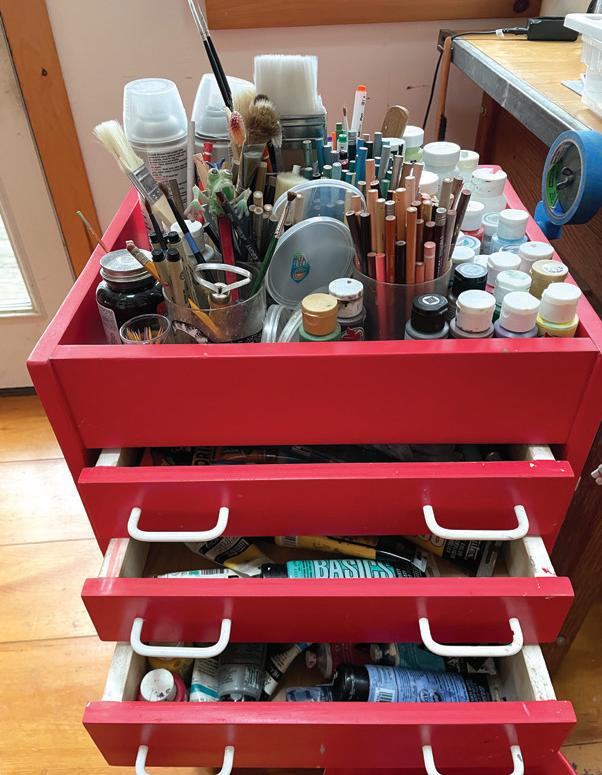










“Wine is one of the most civilized things in the world” attributed to Ernest Hemingway.
Civilization was immeasurably influenced by the existence of the states and empires born out of what would eventually become the Italian modern state. So allow me to shake up your preconceived notions about another historic heavyweight:... chardonnay. You have no doubt heard of the grape, hopefully you are aware of the major stylistic differences between the oak-aged and neutral vessel versions, yet I was shocked to find a chardonnay from Italy that could take a seat at the table with any glass of Chablis I have ever ordered. I would like to introduce you to the 2023 Redentore Chardonnay.
Obviously, chardonnay, being as widely propagated as it is, runs the risk of being lumped together regionally and preventing thoughtful discourse. Here in America, where chardonnay is one of the most consumed styles, it has a certain reputation that precedes it. Namely oaked and the more the merrier. If you are lucky, that bottle might have read Rombauer or Stags’ Leap on the label. More likely it was a magnum (1.5 liters) of something more in the Kendall Jackson/Sutter Home spectrum. This means that in that moment, perhaps in perpetuity ever since, you have thought of chardonnay as a big and buttery mainstay on the picnic table or poolside bar. For many, the issue of this noble grape is settled there as a liquid Tale of Two Cities. Yet we can and should leave room for exploration and growth. Wine is vast and immersive, a big tent with room for all underneath as long as you can make space for the people sitting next to you.

Redentore Chardonnay is a tribute to the four generations of De Stefanis who have worked the Veneto region of northern Italy since the 1800s. Their story was an earnest and humble one, situated in the middle of an area famously Prosecco- dominant. Through time and marriage their land expanded, and with it a confidence in growing grapes rarely seen on bottles south of the Alps. The estate is organically farmed and sulfur-free. The estate
has different levels of labels to signify rarity and age of vines, and the price reflects that accordingly. This particular bottle is of the younger and therefore more reasonably priced Redentore series. These vines, fifteen years in age, are the playground for bright and expressive wine-making by the family with an aim and showcases their profound comfort with these traditionally French varietals in the unique terroir of northern Italy. If you like this, you can return to the wine store or bar where you found it and ask about the De Stafani line!
This is a steel-aged chardonnay and will not carry any of the butter or vanilla notes to your palate. Instead, you are greeted with a bouquet of rich lemon meringue and honeysuckle. The first few sips beckon waves of apple and apricot, maybe even some mango. As your glass and the contents warm up and get a little oxygen exposure, there is a rich, earthy quality I would describe as salty citrus in nature. Maybe even a little sauteed mushroom in the very end. It is clean and exceedingly easy to enjoy, making it a perfect cheese or shrimp cocktail partner. Salads from Cobb to Caesar would love to cozy up to this chardonnay!
This is a time when we are all being told that there are two opinions or sides to every debate. Incentivized legacy and social media exist to fan the flames of these passions to a point of no return. When you go on Facebook and use the laughing reaction to a post to mock someone you disagree with, do you feel better? Does it make the uncertainty of the world around you any easier to digest? My humble advice is to take a deep breath and remember that everyone is entitled to their opinion. It doesn’t mean you have to cosign every misguided conspiracy theory, just a healthy reminder that you could instead choose to log off, grab a bottle to mark the start of the summer, and find some people you love to share it with. The only debate needed for that moment is who to invite and where to enjoy. .
Gregory Post is a sommelier and manager at Saltwater Farm Vineyard, affiliated with Kingdom of the Hawk Vineyard.
































































dedicated group of enthusia but also giving back to their called Digging for Good.
Rob and his brother were you vertisementforametaldetec
vertisement for a metal detec earliest adventures took them resear r, , they soon resear y, , timing is just had been discovered there th
ewolder ch is key ch.However
or over 30 years, Rob Harlow been metal detecting, uncove lost relics and forgotten treas buried just beneath the surfa Whbhldhd
What began as a childhood fascination with pirates and buriedtreasure has evolved something far more significa To y, y, , and a sts are not only unearthing his community through an initiati
, Rob, his family Today
w has ering sures ace. into nt.
ung when they first saw an adctorinacomicbookOneofthe
ctor in a comic book. One of their Toorrington based on location n learned a crucial lesson: while as important—hundreds of coins he prior year.
As he gr r, , Rob’s passi that metal detector.
Along came Covid and Rob, CoordinatorattheHaddam
eandV
dinator at the Haddam children, Alexandr Vill outingstoa new level. What activity quickly turned into a and friends.
HistoricalSociety mtoT
tory ive ir
ion never faded, and he held onto
his wife Nicole, the Education y,,andtheirtwo
Historical Society, and their two ette, took their metal detecting began as a safe, outdoor family a movement, drawing in neighbors
Rob recalls the early days: “W out on a lawn detecting. A ge member of the Haddam Hist something like ‘Holy cow! W kids outside? They’re not on torical Society
We e had like ten kids and our friends entleman, who happened to be a y, , walked by and said What are you doing with all of these their devices. This is amazing! Why
we wanted to teach them t in nature. The second thing keep kids outside, doing fun The first thing we wanted t
to give ng was n things to do is
to the community.”
Family Affair and a
“The first thing we wa things in nature. The s
to give back to the com the charge remains the
anted to do is keep kids outside, doing fun second thing was we wanted to teach them y, r, , e same.
The Harlow family is t playing baseball, socce they can. Their love fo for history and a desir Digging for Good.
er and hockey ,” Rob explains. Four years later mmunity a Growing Movement
truly an outdoorsy bunch—hiking, y, , or going fishing whenever or the outdoors, combined with a passion re to give back, became the foundation of
Digging for Good volu thithitb
unteers are a diverse mix -- metal detecting fftddtdbth
r, , Digging for Good
Soon after don’t you come down to our an old house)?’”
gy house and metal detect there (it’s was born.

enthusiasts, history bu and old treasure seeke
uffs, outdoor adventurers, and both young ers.
This past year was esp website, expanding th video editing, DFG als Minor’s team.
pecially busy
y. . In addition to building a heir presence on social media, and learning so sponsored and coached a Little League
More Than a Hobby: G DFG is more than just a rywhilesupportingloc
Giving Back Through History
hobby; it’s a way to engage with histocalcharitiesHomeownerswithhistoric ry while supporting loc properties invite the gr DFG requests a $75 don choice. Any artifacts un
cal charities. Homeowners with historic roup to detect on their land, and in return, nation to a local charity of the homeowner’s ncovered belong to the pr r.
operty owner
“Most homeowners ar Rob explains. “They ca connects them to the p homeowners even allo
ren’t interested in money or valuables,” are more about finding something that past owners of their home.” Sometimes, ow the kids to keep their finds.
The thrill of metal dete
ecting lies in the unknown. gpSpringtime, when the freeze-thaw cycle brings objects closer to th an especially fruitful season. g, he surface, is





Two particularly exciting finds occurred at the Pratt House Museum in Essex, where coins were found in different locations of the lawn—a silver dollar from 1858 ad a rare 1780s half-penny. Another memorable discovery was made at a 1700s home, where the group found a pocket watch fob marked with the letter ‘B’—matching the surname of the home’s earliest known owners.
“We’re not under delusions of grandeur of finding something and retiring. We don’t think we’re going to find Captain Kidd’s treasure,” Rob laughs. “But every time I get a good signal, I think, maybe this is going to be a gold bar or something—and I feel like a kid again.”
In the meantime, Rob’s keeping his day job as AVP of Digital Marketing at The Hartford.

One significant challenge for detectorists is finding high-quality locations. Popular public sites like Hammonasset Beach often have three or four people detecting at a time, mostly searching for recently lost valuables.
“That’s not really our sweet spot,” Rob says. “We look for old, historical items, so getting permission from property owners is key. Essentially, someone with an older house has to invite us to come look for treasure.”
pirate treasure, and retire. I can tell you it’s not like that. Not to say it’s not out there, but it’s awfully nice to be outside with my wife and my kids and my friends.”
The impact of Digging for Good extends beyond unearthing objects—it has created a tight-knit community of history buffs, families, and junior detectorists ranging in age from 5 to 16.
For Rob’s children, the experience is shaping their future. Thirteen-year-old Alexandre is excited by the hunt for old coins and relics, while nine-year-old Villette enjoys cleaning and restoring their finds. Everyone in the group plays a role, whether it’s detecting, digging, researching, or restoring.
“At the Pratt House which we did in conjunction with the Essex Historical Society [EHS], there were six or eight


Convincing homeowners isn’t always easy. Many don’t want their yards dug up.
“A part of why Digging for Good is what it is is to meet people and get permissions to detect at their houses, because it’s really hard to find things in public places,” says Rob. “Places like public parks have been pounded, and it’s really hard to get permissions.”
Metal detecting, he says, is a lot like golf. “You have to enjoy being outside and digging in the dirt, and not be so concerned with your score.”
Rob adds, “I think everyone who buys a metal detector thinks they’re going to walk in the backyard, discover


families with their kids and, in that case, our kids were more in charge and putting on the show — they were the guides paired up to show what we do and how to detect and how we dig a hole that doesn’t make a mess and how to clean items,” he explains.
“There are all sorts of tasks from swinging a detector to digging a hole or pinpointing it or cleaning. Participants are all interested in different aspects.”
“EHS supports history education at every level. Working with Digging for Good allows us to learn more about our historic sites while encouraging young people to get outside to learn about history in different settings and across many time periods, said EHS Director Melissa Josefiak adding, “We enjoy seeing the ‘thrill of discovery’ on their faces - regardless of what they find!”
The Pratt House program was so successful – with hits left and right – that Digging For Good is returning twice this summer. “It



taught us so much about our historic site. It’s a youth education program – we’re getting students outside, away from their screens, learning more about history, and connecting with their community. It’s a natural partnership for us,” Josefiak added.
Rob believes, “It will help them in their future lives because nowadays it’s a struggle to find kids who can communicate because everyone’s on their devices all the time.”
Through partnerships with organizations like the Haddam Historical Society and the Essex Historical Society, the group educates others about the significance of their discoveries. Public events and presentations allow history to come alive in a hands-on way.

A typical dig lasts anywhere from 2-5 hours, depending on what DFG finds and the size of the area. They usually bring two to six adults and two to ten kids.
“How we approach digging depends on the property and where you want us to dig, but our goal is to make it appear as if we were never there. You may see a little dirt here or there, but there will be no holes left when we leave.”
What started as a handful of outings per year has blossomed into a thriving initiative, with a growing waitlist of homeowners eager to participate.
“We used to do four or five digs a year,” Rob shares. “Now, through word of mouth and events, we have over 30 requests lined up.”
Digging for Good is not a charity, nor does it accept donations for itself. Instead, it is a movement dedicated to preserving history, engaging communities, and fostering curiosity in young minds.
For those interested in having their property detected or learning more, visit diggingforgood.com. As Rob and his team continue to uncover history, one find at a time, they are proving that treasure hunting isn’t just about what you find—it’s about the stories you uncover and the community you build along the way.
For information on the upcoming digs through Essex Historical Society, please visit essexhistory.org.
















EDDIE B: IF THESE CLASSROOM WALLS COULD TA FRIDAY, 06.06.25 | 8:00 PM
Eddie B. is a comedian and former teacher of 13 yea who speaks the honest truth about the public schoo systems around the world.
THE GOONIES (1985) 40TH ANNIVERSARY | SATURDAY, 06.07.25 | 7:00 PM



LK rs l
Celebrate the 40th anniversary of this epic classic film. Relive the adventure.

DAVE MASON SATURDAY, 08.16.25 | 8:00 PM
Come see this music legend for his one nig performance!
STOPMAKINGSENSE ht only
STOP MAKING SENSE: LIVE EVENT HOSTED BY JERRY HARRISON FRIDAY, 09.12.25 | 7:30 PM
Stop Making Sense features Talking Heads’ memorable songs in the newly restored, 4 anniversary, 1984 film w/ Q&A.
(IN THE OASIS ROOM) AY
RETURN OF THE ORIGINAL SINNER’S CIRCLE ) | FRIDAYY, , 06.20.25 8:00 PM
The popular songwriting series returns to New London with a performance from the “Original Sinners” in the Oasis Room. Sponsoredby:TheMichalowskiFamily.
GIRLS NIGHT - THE MUSICAL SUNDAY, 06.29.25 | 7:00 PM
er in this off
Share the laught f--Broadway sensation as five girlfriends celebrate a wild night out!



JESUS “AGUAJE” RAMOS & THE BUENA VISTA ORCHESTRA SUNDAY, 09.28.25 | 7:00 PM
The Buena Vista Orchestra, under the direct Ramos, features key players from througho history of The Buena Vista Social Club.
VITAMIN STRING QUARTET SATURDAY, 10.11.25 | 8:00 PM
Long before Bridgerton broke the Netflix algorithm, Vitamin String Quartet (VSQ) ha establish classical crossover as a genuine fo contemporary music.
CHECK OUR WEBSITE FOR EVENT UPDA
ATTES! most 0th ion of ut the d helped rce in
























































